Airplanes are essentially “time travel machines.” At least, that’s what I tell my grandkids. By them, we can travel forward or backward in time, arriving suddenly into breathtaking cultures and places that are very, very different from what we know. With my head still dizzy from jet lag, I try to adjust my mind and body to the sudden change, finding myself nine hours behind of where I was at the same time yesterday. It’s amazing, really…
My husband Dan and I love travel and together we’ve been to a lot of wonderful places, and yet this particular trip to England was very different. This time, having been deeply inspired by Jim Belcher’s book, “In Search of Deep Faith”– the story of how he and his family traveled through Europe for almost a year studying heroes of the past in an effort to pursue a faith that’s far deeper than the “moralistic therapeutic deism” that pervades the current church in America– Dan and I were likewise ripe and ready for such a “pilgrimage.” Sometimes, we have to travel “back” in order to properly go “forward.” This is exactly what Dan and I were hungry for– “time travel” of sorts to search out our Christian roots and deepen our faith.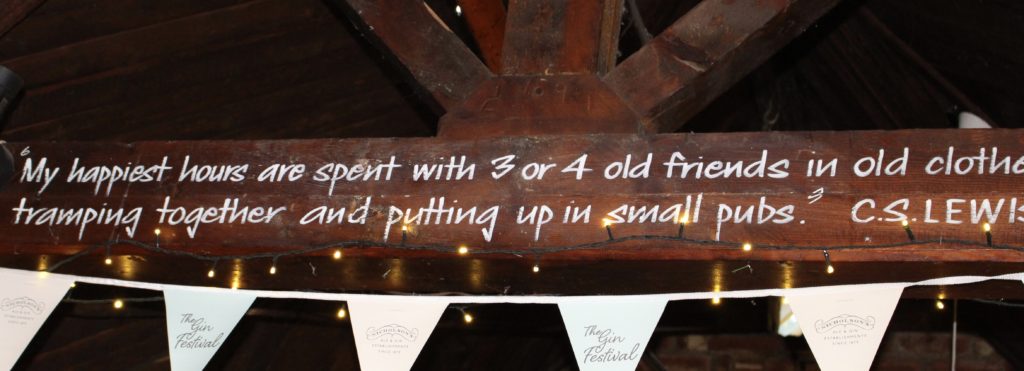
With only a couple of weeks available for us, we decided that Oxford, England– home of the great writer C.S.Lewis– was a perfect place for us to begin. C.S. Lewis’s “Chronicles of Narnia” had made a great impact on me when we read them to our kids so many years ago. Our kids in turn have read the series to their own children. When one of our grown sons told me that Lewis’s “Mere Christianity” had impacted his faith in a very significant way, he urged me to read it… which led me to read more and more of Lewis’s books, and led Dan to read some of them out loud to me. Our plan, consequently, was to spend a full week studying at the C.S. Lewis Foundation Summer Seminar in Oxford.
After flying into Heathrow, Dan and I took a bus to Windsor to spend a day adjusting to the 8 hour time change. Our stay was at the Crown and Cushion B&B situated over a centuries-old pub in Eton (just over the walking bridge from Windsor, very close to the castle.) The sheer age of the building, the crooked floors and creaking narrow staircases plunged us into history. Windsor and Eton are beautiful, exactly the authentic British welcome we’d hoped for!
Time-travel can be disorienting. Though barely mid-afternoon, we were ravenous, so we popped into the Duchess of Cambridge pub for rich and meaty beef pies. Cozy in the pub, Dan fought the urge to nod off as sudden rain deluged the streets outside the window and a sea of umbrellas popped up out of nowhere. The rain stopped as abruptly as it had started when we finished our lunch… or dinner… whatever…and we were off to see Windsor Castle.
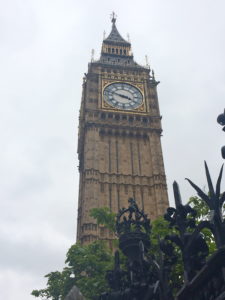 After enjoying this perfect little town until we were acclimatized, we very reluctantly left the peaceful
After enjoying this perfect little town until we were acclimatized, we very reluctantly left the peaceful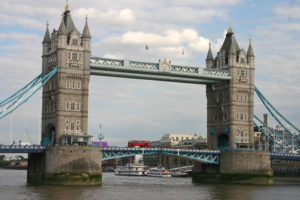 setting, heading off by train for London. London, of course, is busy, crowded, loud, and full of history. We did the expected: saw the Tower of London, the Tower Bridge, Big Ben, Trifalgar Square and Picadilly Circus, Parliament Buildings, Buckingham Palace, Downing Street… but the highlight that I had deeply anticipated was Westminster Abbey. Dan and I took our time wandering slowly through it, excitedly nudging each other as
setting, heading off by train for London. London, of course, is busy, crowded, loud, and full of history. We did the expected: saw the Tower of London, the Tower Bridge, Big Ben, Trifalgar Square and Picadilly Circus, Parliament Buildings, Buckingham Palace, Downing Street… but the highlight that I had deeply anticipated was Westminster Abbey. Dan and I took our time wandering slowly through it, excitedly nudging each other as
we identified markers. “Look! William Wilberforce is buried here!” “Ah!! Rudyard Kipling!” “Oh my goodness! The coronation chair!”
Then, traveling light –just one small carry-on each– Dan and I crowded into the tube heading to Paddington Station once again, and boarded our train for Oxford- that beautiful “sweet city with her dreaming spires.”
While checking in at the Red Mullion– our “home” for the next week– we immediately became acquainted with the first two couples who would also be part of our small study group of eleven people. Altogether, this group of fellow-scholars was a pleasant and congenial mix of Lewis enthusiasts from Tennessee, Seattle, Minnesota, and Japan– a well-read group of interesting and animated individuals.
Together, we all headed to the Kilns– the quaint and cozy home where C. S. Lewis had lived for 30 years,
and where the very popular Chronicles of Narnia, countless letters, and many other works were penned. For the next very full week, our group was saturated in the story of C.S.Lewis and his writings, expertly led by Rev. Earl Palmer, retired Senior Pastor of University Presbyterian Church in Seattle, WA.
To study Lewis’ life was to also study the friendships and influences that formed his faith and theology… so we also learned much about J.R.R. Tolkien, G.K. Chesterton, Lewis’s wife Joy Davidman, the Inklings, Dorothy Sayers and others of his contemporaries who shaped what he became. To study Lewis and his writings is to deeply appreciate how he was used by God as an arrow very affectively pointing us to Christ, and the great relevance of his writing for us even in our time and in our faith. Lewis himself believed that sound biblical study, thought, discussion, reading and writing ought to be perpetuated, even in the most difficult of times.
Interspersed between lectures, our group visited many historically rich sites in both Oxford and Cambridge in tours hosted by Kim Gilnett from Seattle Pacific University. A Lewis enthusiast, Kim has spent over 15 summers at The Kilns where he has been involved in ensuring the historical accuracy of its restoration, and was an excellent tour guide– along with his chauffeuring assistant Graham, a very pleasant and amiable British “bloke.”
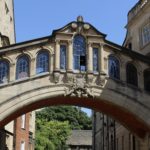 Perpetual sunshine and surprisingly intense 90ºF heat that we did not expect (or prepare for) in England failed to deter the enthusiasm of seeing places like Magdalen College (Oxford) and Magdalene College (in beautiful Cambridge), my much-anticipated Addison’s Walk, Balliol, St Mary’s Church, Blackwell’s Bookstore, the Sheldonian Theater, Tolkien’s home and many, many other sites including the Martyr’s Monument and cobblestone cross inlaid on Broad Street marking the exact site of where Thomas Cranmer, Nicholas Ridley, and Hugh Latimer were burnt at the stake for their Faith.
Perpetual sunshine and surprisingly intense 90ºF heat that we did not expect (or prepare for) in England failed to deter the enthusiasm of seeing places like Magdalen College (Oxford) and Magdalene College (in beautiful Cambridge), my much-anticipated Addison’s Walk, Balliol, St Mary’s Church, Blackwell’s Bookstore, the Sheldonian Theater, Tolkien’s home and many, many other sites including the Martyr’s Monument and cobblestone cross inlaid on Broad Street marking the exact site of where Thomas Cranmer, Nicholas Ridley, and Hugh Latimer were burnt at the stake for their Faith.
Worship at Holy Trinity Church where Lewis attended regularly was a particularly special experience, as well as visiting the cemetery where he is buried unceremoniously. Later, we also visited the cemetery where his close friend J.R.R. Tolkien is buried. (Among a clutter of notes and coins from around the world, someone had tied a gold ring over Tolkien’s grave.) We stopped at Madingly American Cemetery on our long drive to Cambridge, visited the simple cemetery where Sir Winston Churchill is buried, and stopped for tea and a lecture in the beautiful and historical shady Orchard in Grantchester.
One very pleasant evening, we enjoyed a mile-long evening walk on the footpath along the Thames River from the Perch pub –where we’d sat in the cool shade while Walter Hooper recalled his times with Lewis– to the Trout pub for dinner. On another afternoon, we experienced an outstanding British tea (sandwiches, sweets, cheeses, scones with clotted cream etc) served in the garden at the Kilns, hospitably prepared and hosted by the Kilns staff.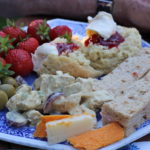 We also savored delicious, thoroughly British meals at various pubs like The Eagle and Child, the Whiteheart, the Plough, the Lamb and Flag… all renowned places where the Inklings loved to meet for conversation and good fellowship. Food was hearty, plentiful and tasty, with an introduction to Pimm’s, and my favorite dessert, “Eton Mess.”
We also savored delicious, thoroughly British meals at various pubs like The Eagle and Child, the Whiteheart, the Plough, the Lamb and Flag… all renowned places where the Inklings loved to meet for conversation and good fellowship. Food was hearty, plentiful and tasty, with an introduction to Pimm’s, and my favorite dessert, “Eton Mess.”
This incredible week of study also featured time spent with Aiden Makey, historian biographer of G.K. Chesterton, and Walter Hooper, one of the last to have actually known and worked with Lewis, and who compiled and edited the book, “Letters by Lewis.” Far, far too soon, the amazing week came to its end, and after good-bye hugs and well wishes, we all parted our separate ways.
And just like that… it was time to re-enter the time-machine to find our way back home, so much deeper, richer in our faith and in our lives for having gone! Life is a journey. Having experienced more of our roots, we came back better understanding our true destination… and sometimes, this can only happen if we, like Jeremiah 6:16 urges us, are willing to go back periodically to a completely different time, and a completely different place… back to “the ancient paths…” and find rest for our souls.

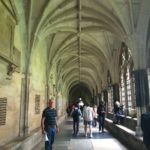
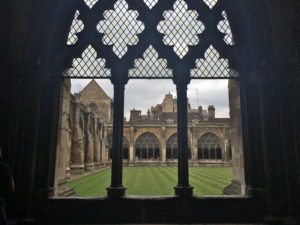
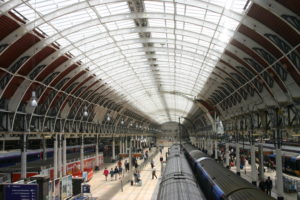

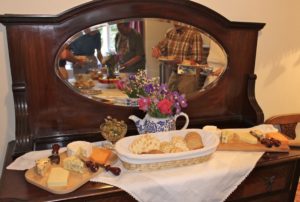


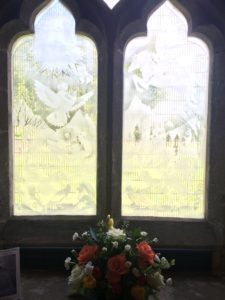
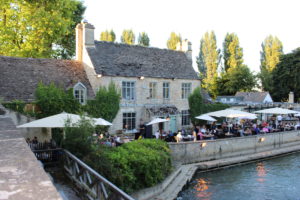


Comments
Powered by Facebook Comments